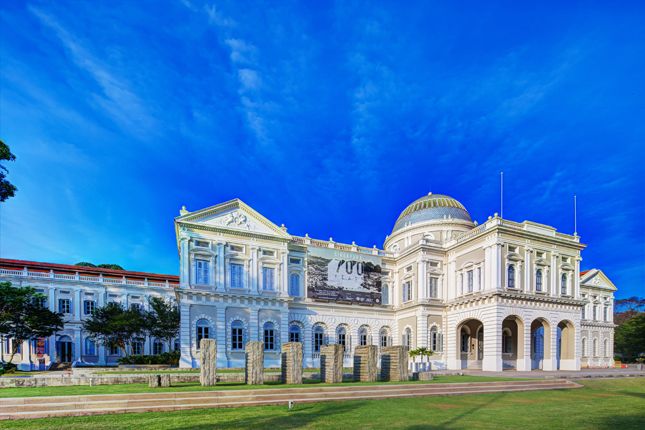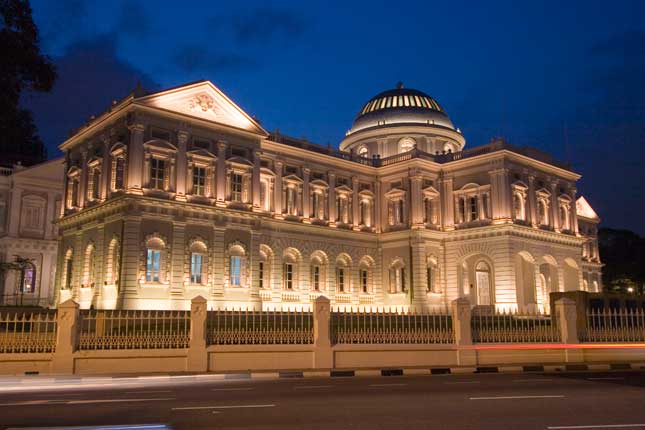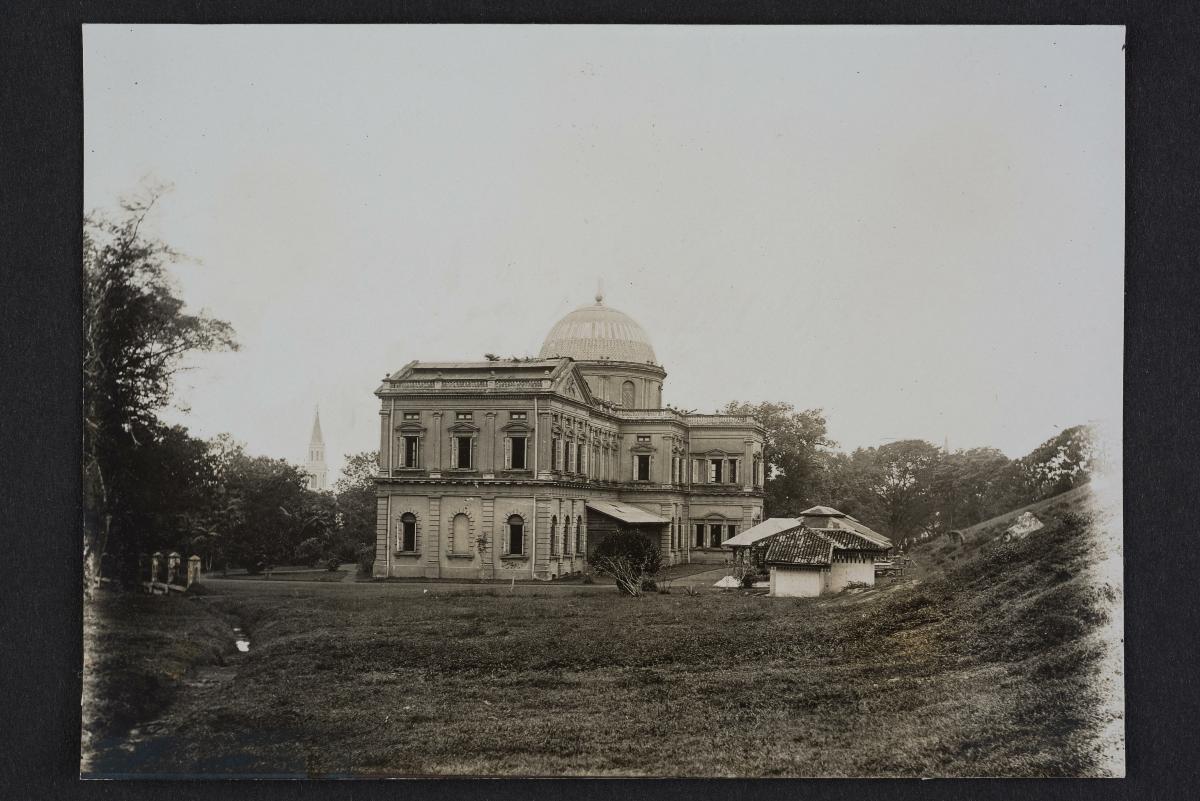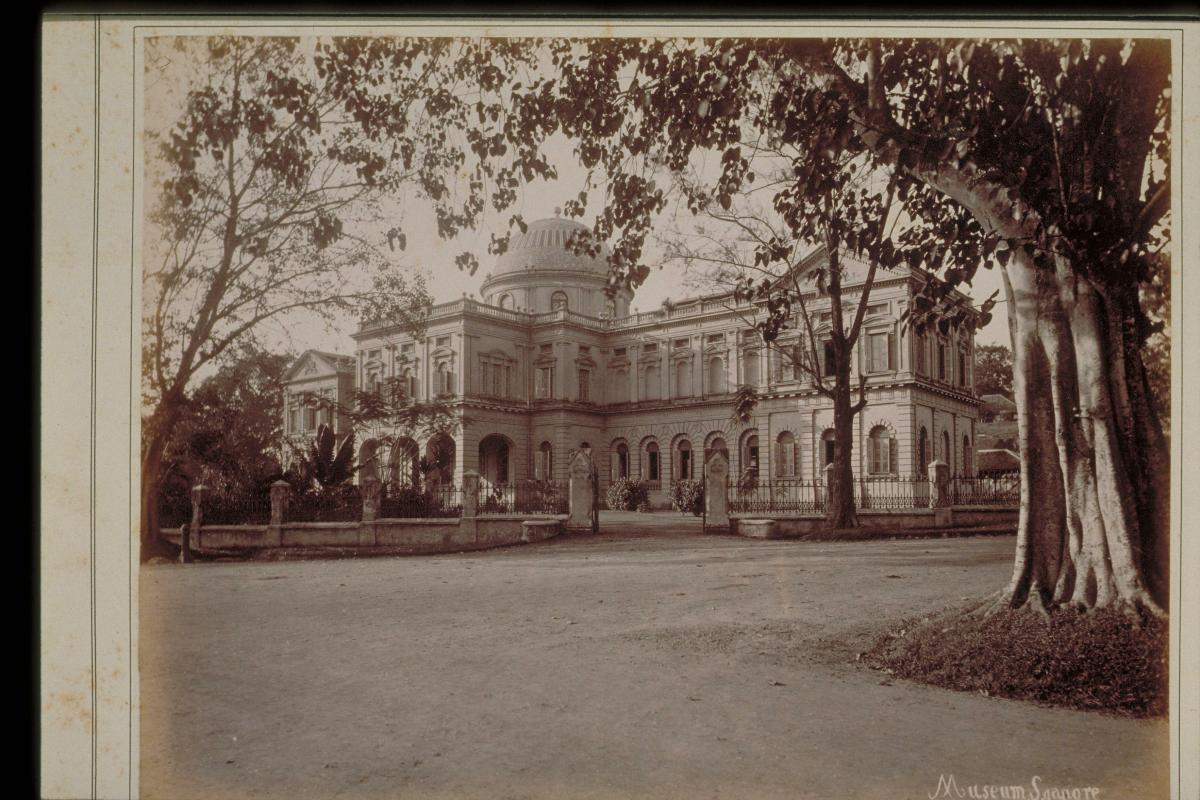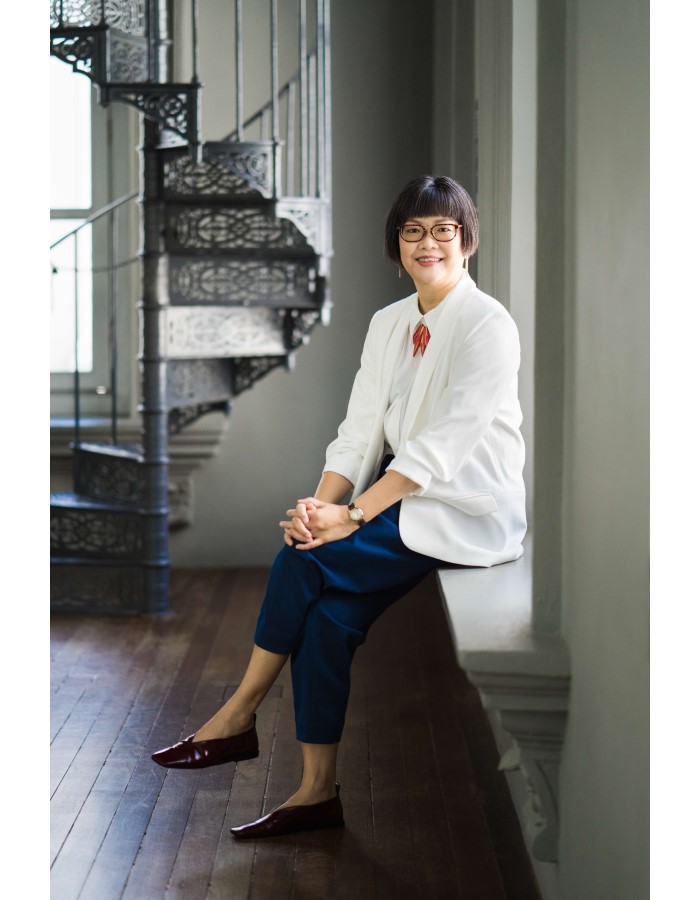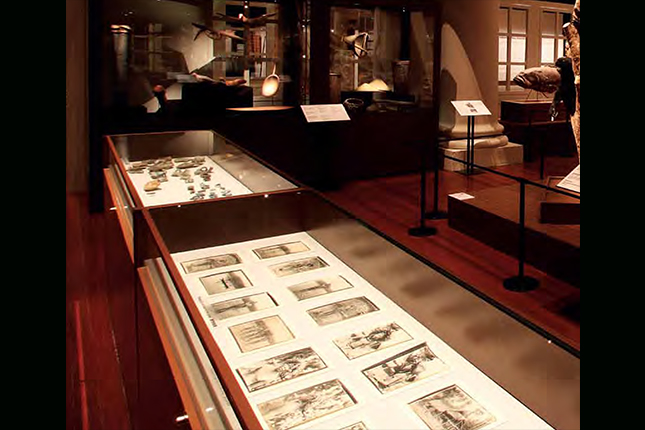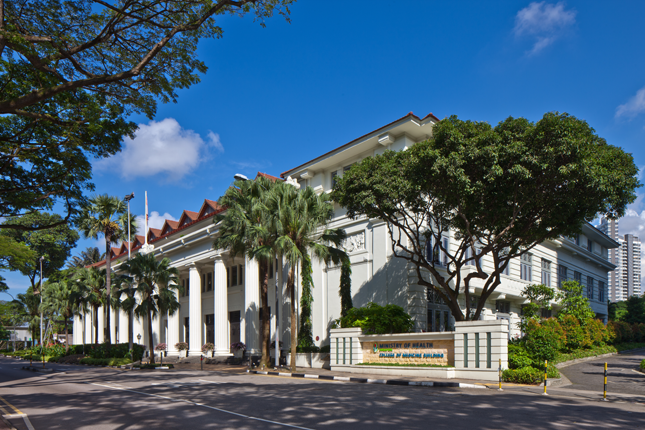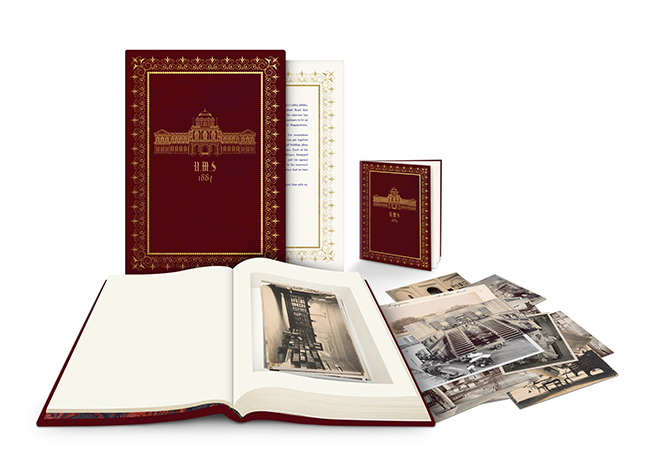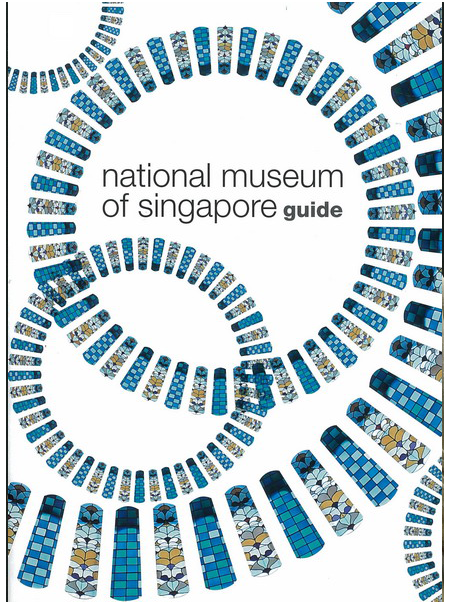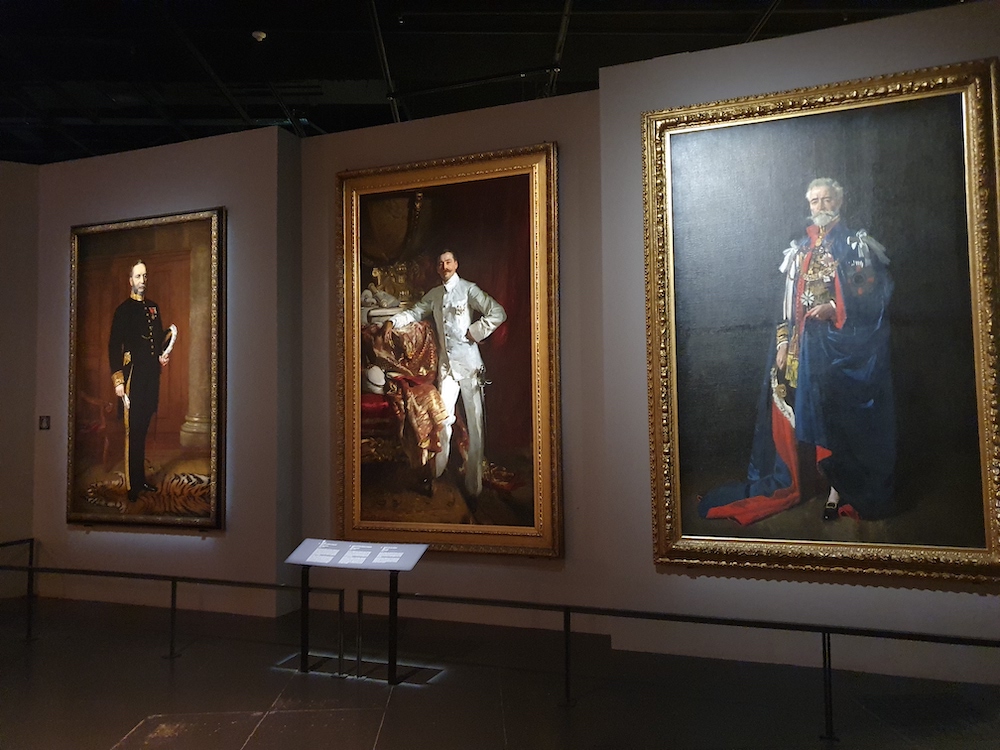With its wide façade and large dome, the National Museum of Singapore has been a prominent landmark on Stamford Road for over a century. It is Singapore’s oldest existing museum, devoted to the general history of Singapore. The grand edifice is a testament to Singapore’s role as a centre of academic research in the region since the nineteenth century.
Raffles Library and Museum
The National Museum traces its history to the early years of Singapore’s colonial era. Plans to found a museum was first mooted in 1823. However, for the next two decades, there were no concrete actions taken to realise the plan. It was only in 1843, when the Singapore Library received two gold coins presented by the Temenggong of Johor, that an attempt was made. A small museum was set up within the library which was housed in Singapore’s first school, Singapore Institution (today’s Raffles Institution). The excitement, however, soon died down.
Both the museum and the library were relocated to the Town Hall in 1863. Ten years later, discussions for a government-supported, purpose-built museum finally began. A committee of eight prominent citizens was appointed to organise the Exhibition of Colonial Products – an initiative launched in different colonies across the British Empire – in connection with the Exhibition Building in South Kensington, London (known as the Victoria and Albert Museum today). The committee was also tasked to oversee the establishment of an institution that would be named Raffles Library and Museum.
It was decided in 1882 that a proper museum building would be constructed. Work began in 1884 and the building was completed three years later. Governor of the Straits Settlements Sir Frederick Weld ceremoniously unlocked the front door on 12 October 1887. The museum was intended to be primarily a repository of zoological specimens, documenting the natural history of Singapore and the region.
Overcoming Problems
Despite the grandeur of the new edifice, the museum’s initial years were plagued by numerous problems and challenges. Zoological specimens kept in the museum often suffered mould growth, while termite invasions rendered part of the roof structurally unsound. Moreover, exhibits were found to be covered with dust from the streets outside, as no glazing was installed on the windows of the building.
Nevertheless, the museum grew steadily. By 1910, Raffles Library and Museum was a highly regarded and established institution. The museum boasted an immense collection of specimens and artefacts from a wide range of fields including zoology, botany, geology, ethnology, and numismatics, collected from the Malayan region. There were proposals to build a new and larger museum elsewhere to house the ever-increasing collection. However, the central location of the museum’s existing site was thought to be ideal, and the plan to relocate the museum was eventually abandoned. Instead, a parallel block was constructed behind the museum and was officially opened on the Lunar New Year of 1907. In 1916, a library wing was added. The architecture of these extensions was consistent with that of the original museum block.
Subsequently, Dr Karl R. Hanitsch, the curator and director of Raffles Library and Museum, started a Singapore history collection. The German-born entomologist, who served in the institution between 1895 and 1919, was instrumental in starting a collection of portraits, plans, and photographs of old Singapore.
Shift in Focus
In 1960, the museum separated from the library, and its name was formally changed from Raffles Museum to National Museum. Following Singapore’s independence in 1965, the museum shifted its focus to reflect the fledgling nation’s cultural and academic interests, which helped to define its new position on the international stage. The zoological specimens were transferred to the Zoology Department of the University of Singapore (now National University of Singapore) in 1972, allowing the museum to devote itself solely to the history, ethnology, and art of Singapore.
Architecture and Furnishings
Designed by Colonial Engineer Sir Henry E. McCallum, the original structure (the front block of the present building) is largely Neo-Palladian in style. This architectural style is characterised by a highly symmetrical façade and the use of pediments above the windows. The large triangular pediments capping each end of the front block are adorned with the coat of arms of Queen Victoria, most likely to commemorate the Golden Jubilee of the monarch’s reign in 1887 – the same year the building was declared open. Other Neoclassical features are also incorporated into the building’s façade, such as Doric columns and pilasters on the ground level and Ionic pilasters on the second level. Neat rows of large windows ensured ample ventilation, which was very much needed in tropical Singapore before air-conditioners were installed.
One of the building’s most outstanding features is its rotunda, which is crowned with a dome covered with fish-scale tiles. Coloured glass panels and arched windows on the dome allowed the interior space to be naturally illuminated.
National Museum of Singapore Today
The National Museum was renamed the Singapore History Museum from 1993 to 2006. When the museum building began redevelopment and renovation in 2003, the museum was temporarily moved to Riverside Point. In 2006, the museum returned to its home and became officially known as the National Museum of Singapore.
Our National Monuments
Our National Monuments are an integral part of Singapore’s built heritage, which the National Heritage Board (NHB) preserves and promotes for posterity. They are monuments and sites that are accorded the highest level of protection in Singapore.




